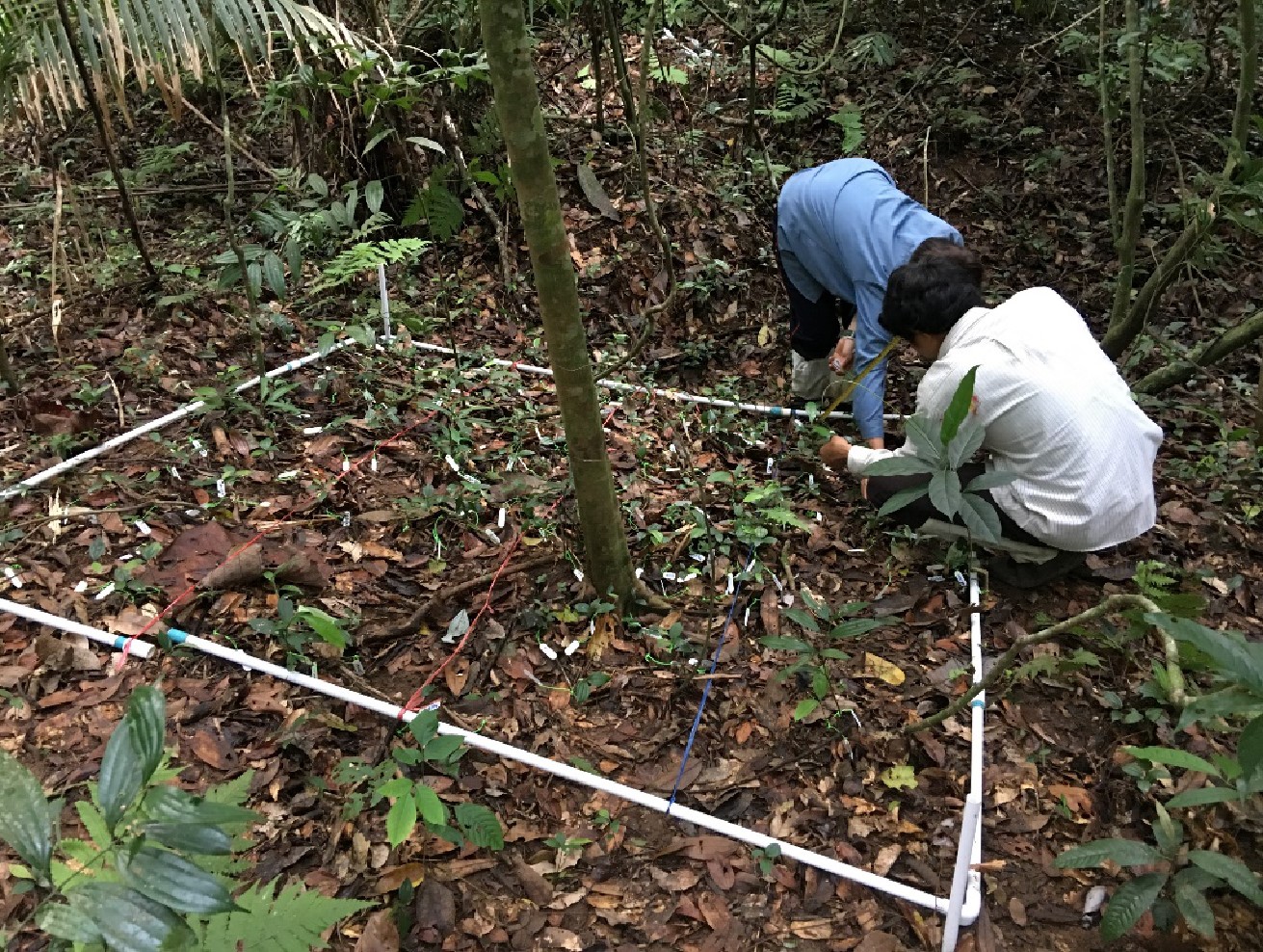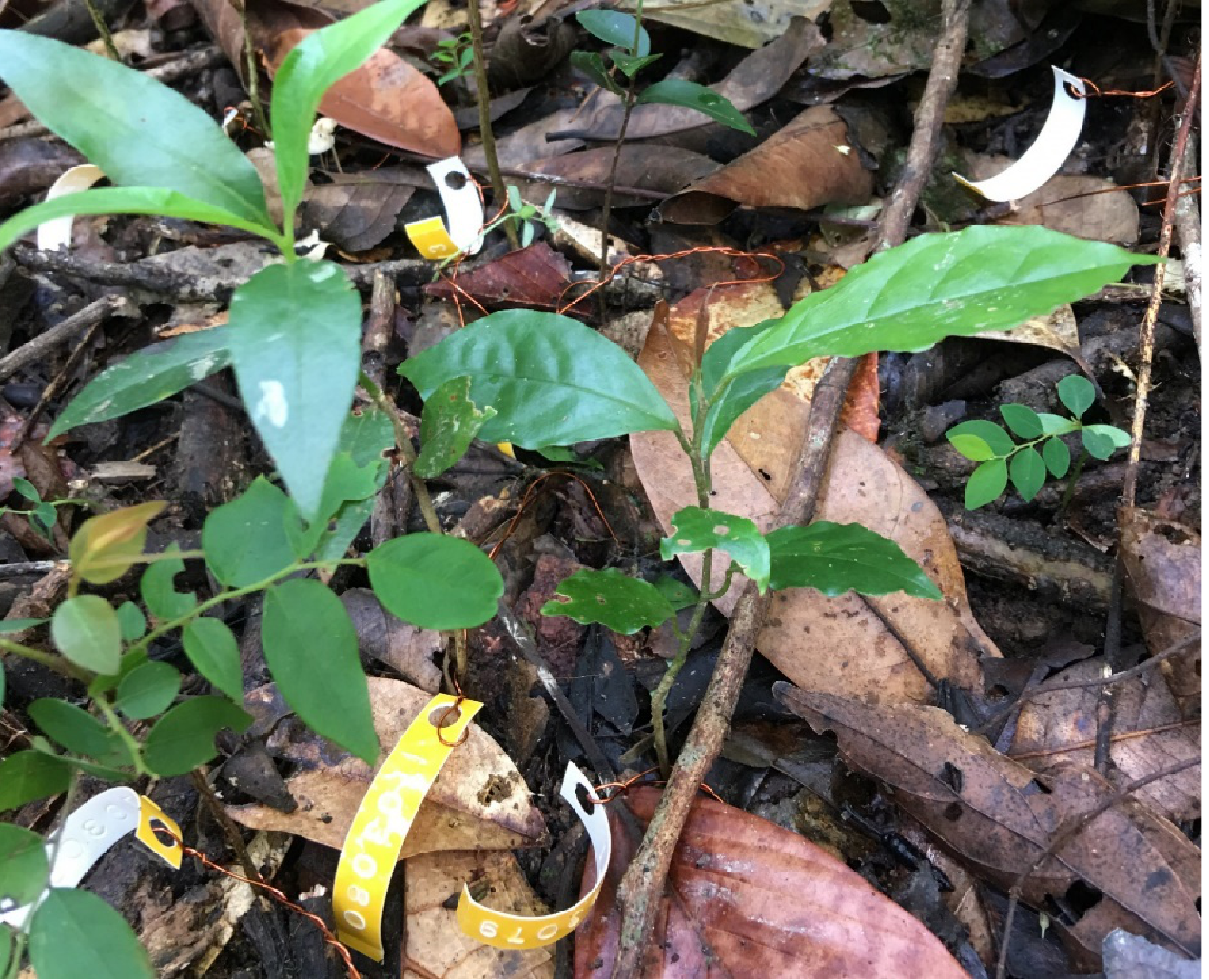Conspecific negative density dependence (CNDD) has been considered a cornerstone of species coexistence in highly diverse ecosystems like tropical forests. However, most studies have focused exclusively on trees. In a study published in Ecology, researchers from Xishuangbanna Tropical Botanical Garden (XTBG) of the Chinese Academy of Sciences directly compared how neighbor density influences seedling survival in trees and lianas (woody vines). They found that lianas experience much stronger conspecific negative density dependence than trees during their early seedling stages. The researchers monitored the survival of over 36,000 seedlings from 87 tree and 56 liana species across two one-year census intervals in the Mo Singto Forest Dynamics Plot in Khao Yai National Park, Thailand. Using hierarchical Bayesian models, they analyzed how seedling survival was affected by the density of neighboring plants. The results revealed that although standardized CNDD coefficients were similar between trees and lianas, the per capita effect was four to six times stronger for lianas. The presence of a single adult conspecific neighbor reduced liana seedling survival by 1.2% to 1.8%, compared to only a 0.3% reduction for tree seedlings. Furthermore, trees exhibited high interannual variation in CNDD prevalence. The proportion of tree species affected dropped from 47% to 11% between the 2018–2019 and 2019–2020 census intervals. In contrast, CNDD prevalence in lianas remained more stable, ranging from 13% to 23%.These contrasting patterns suggest that trees and lianas have evolved distinct ecological strategies. The conservative growth strategy of trees may render them more sensitive to annual environmental fluctuations, whereas the opportunistic growth strategy of lianas leads to a stronger and more consistent density-dependent response.“Our work demonstrates that density-dependent mechanisms—potentially driven by soil pathogens or resource competition—play a powerful and previously underestimated role in regulating liana populations from the earliest stage of their life cycle,” said LIN Luxiang of XTBG.The researchers emphasized the importance of incorporating different plant growth forms into forest ecology models. They suggested that future studies should investigate the specific mechanisms underlying CNDD and examine the density-dependent effects across all plant life stages.The study was supported in part by the Joint Fund of the National Natural Science Foundation of China and Yunnan Province.

Researchers observe seedling growth in forest plot in Thailand. (Image by SUN Zhenhua) 
Tropical tree and liana seedlings. (Image by SUN Zhenhua)
First published: 16 September 2025
|


